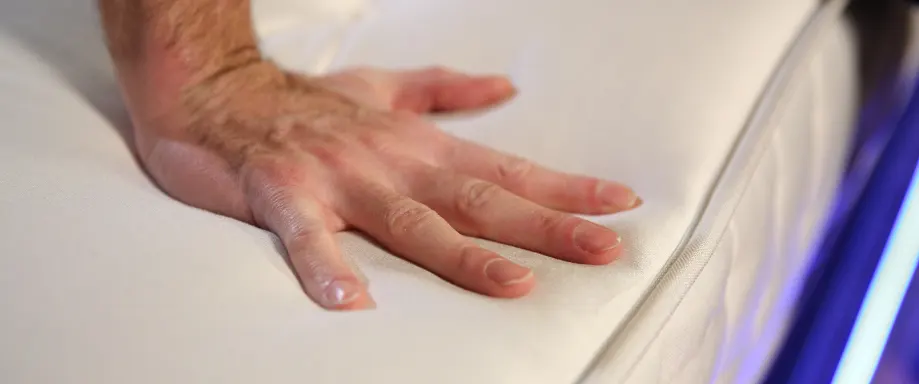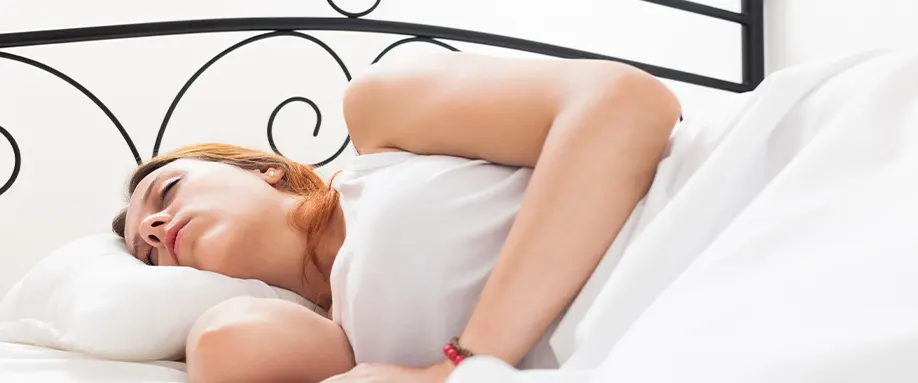Where to start when choosing a mattress topper?
As promised, we're going to start this guide off with a few general questions you should ask yourself before you start to look at different mattress toppers. It might seem silly but this is the best way to ensure you don't get overwhelmed once you've entered the store or started searching online.
So, we're going to start off with a few basic questions and some clarifications. Just take note of your answers and try your best to stick to them!
Do you need a mattress topper?
The first question you need to answer is whether you need a mattress topper in the first place. And this is because you need to be realistic about what your mattress topper can actually do. For example, if you currently wake up with severe back pain and are sleeping on a mattress that's over a decade old, there's only so much a mattress topper can do for you.
After all, a mattress topper still relies to some extent on the mattress underneath. And the thinner the mattress topper, the more important the mattress becomes. So, don't think that a 7cm topper can make a decade-old mattress feel like it's new.
However, that doesn't mean that toppers don't have their place. For example, if your mattress is only 3-4 years old, a topper will likely make it feel a bit more fresh. On top of that, a topper can somewhat correct certain features of your current mattress. But more on that in the next segment.
What is wrong with your current mattress?
As we've already established, a mattress topper can somewhat correct your current mattress. So, it's important to know what's wrong with your current mattress in order to zero in on what needs fixing. Obviously, first determine whether you should change your current mattress altogether.
Then it's time to nitpick. For example, do you wake up covered in sweat? If so, getting a mattress that's breathable and/or cooling is a great idea. On the other hand, getting a memory foam mattress topper would likely make you sweat even more! But more on that in the materials section.
On the other hand, if you feel like your current mattress is too firm and you wake up with back pain, a soft mattress topper can balance things out and keep you more comfortable. In this example, memory foam toppers make for an excellent choice!
And then there are less obvious gripes. For example, do you have frequent spills and want an easier way to clean your mattress? In these cases, you might even want to look into getting a mattress protector or a mattress pad. Speaking of which, we should probably discuss the differences between the three.
Mattress topper vs mattress pad vs mattress protector
Since not everyone will be familiar with the differences between a mattress topper, a mattress pad, and a mattress protector, we'd like to quickly go over them. After all, they serve different purposes and you might find that a mattress protector or a mattress pad are better suited for your situation than a mattress topper!
Mattress toppers
The main purpose of mattress toppers is to add comfort to your mattress. They're generally thicker than the other two, come in many different materials, and are easier to find. A great mattress topper can make a slightly older mattress feel a lot more comfortable however, their primary purpose typically isn't to protect the mattress itself.
Mattress protectors
As the name implies, a mattress protector's main job is to protect the mattress underneath. This is why they're usually made from waterproof and stainproof materials. They can also typically be cleaned with a regular wet cloth or even washed in the washing machine in some cases. However, mattress protectors aren't typically too comfortable and can be loud if you toss and turn at night.
Mattress pads
Mattress pads are somewhere in the middle of the previous two. While they can't compare to a thick topper, a mattress pad does offer a bit of cushioning. On top of that, mattress pads are easier to clean than a memory foam mattress topper. They're also similar to a fitted sheet, as you stretch them atop the mattress, securing it from all sides. So, they're a lot more stable than some toppers or protectors.
What size should the mattress topper be?
Next up, let's talk about the size of the mattress topper. In this regard, there are two important factors to consider. First off, the actual size. While rather straightforward, it's important to check out a mattress size chart, see the size of your current mattress and then only look for mattress toppers that are of the same size. You could also get a smaller size if you don't toss and turn during the night but it's usually better to play it safe.
The second thing worth considering is the thickness of the topper. After all, the thicker the topper, the more it can influence the mattress underneath. So, if you have a very firm mattress, you're going to need an extra thick, extra soft mattress topper to balance it out. However, it's also important to note that mattress topper thickness affects the bed itself. In other words, try not to make your bed so high that getting in and out becomes a hassle.
What are must-have features for your mattress topper?
Now it's time to talk about specifics. When it comes to mattress toppers, there are a few distinct areas that you should look into before making your choice. This is because not all toppers were made in the same way or to serve the same purpose. And depending on what exactly you're looking for, whether a certain topper has these features can be a deal breaker.
So, we're going to go through all of the features mattress toppers usually advertise. We'll then explain what exactly this means in practice and whether these features can help you get a good night's sleep. Let's start off with the basics.
Motion isolation
Motion isolation details how stable the sleeping surface is. For example, if you jump on one side of the bed, will the other side bounce as well or stay relatively still? This is called motion transfer and it's the last thing you'd want if you're sharing the bed with a partner.
All of that being said, mattress toppers are somewhat limited in this regard. This is because, for the most part, your mattress will dictate how much motion is actually carried over. However, a good mattress topper can still minimise motion transfer to an extent. This is especially true for dense memory foam mattress toppers and hybrid toppers with pocket springs.
But who should prioritise this feature? We'd say that if you have an old innerspring mattress and share the bed with a light sleeper, this is a must. Again, the topper can't do the job all on its own but it can at least lessen the motion transfer overall.
Cooling
If you're a hot sleeper, getting a cooling mattress topper is also incredibly important. This is because our body temperature needs to drop in order for us to fall asleep. However, if you have a memory foam topper that traps a lot of heat, it might take a long time for you to actually fall asleep.
A cooling mattress topper is even more important if you share the bed with a partner, as their body heat can raise the temperature even further. On the other hand, if you tend to sleep cold, a cooling mattress topper might not be as necessary.
Support
It's also important to choose mattress toppers based on how supportive they are. This is because a topper that doesn't support your spine can lead to quite a bit of back pain later down the line. In this regard, memory foam or latex are typically solid options, as well as some hybrid toppers.
With that being said, the type of support you need does differ from person to person. As we'll discuss a bit later on, both your sleeping position and your body weight to determine the kind of support you need. And even the best mattress toppers are going to leave you unhappy if they don't support your body in the correct way.
Hypoallergenic
While this won't matter to all sleepers, people who suffer from allergies might want to find a topper that's hypoallergenic. This basically just means that the topper itself likely won't cause any type of allergic reaction. However, sometimes this also means that the topper is antimicrobial and can even be treated to keep bed bugs at bay.
But most of the time, it just means that you won't wake us sneezing. So, for allergy sufferers, this is a must. For others, it's just a nice bonus. And, honestly, most mattress toppers these days are hypoallergenic so you usually don't have to think about it too much.
Easy maintenance
While mattress protectors are definitely the easiest in terms of maintenance, there's still some leeway with mattress toppers as well. For example, if the topper has a removable cover, keeping the sleeping surface clean is rather easy. However, when it comes to stains, latex toppers are easier to clean than memory foam toppers. And synthetic toppers are even easier than that!
So, if you like to have breakfast in bed and have had more than one coffee-spilling accident, getting a topper that can be cleaned easily will save you a headache. And if you just like to sleep on fresh-smelling sheets, be sure to find a topper with a removable cover.
Good durability
Just like mattresses, mattress toppers can't last forever. However, how quickly a mattress topper will lose its shape and bounce depends on the materials used. For example, a latex mattress topper will stay relatively unphased for a good number of years. On the other hand, toppers from synthetic materials might lose some of their edge within two or three years.
Of course, memory foam and latex toppers are also more expensive. So, in the grand scheme of things, synthetic toppers might still be cheaper in the long run, even if you have to get a new one more often. But if you just want to get one topper and stick with it for a while, try getting a more durable material.
How do you currently sleep?
In our guide on how to choose a mattress, we talked about how examining your current sleep habits is essential for ensuring that your new mattress can keep you comfortable. Well, since mattress toppers affect the firmness of the mattress underneath, a similar principle applies.
Namely, this refers to your sleeping position and your build. When you sleep on a soft mattress topper, your body will naturally sink into the topper. The softer the topper and the bigger you are, the more you will sink. And depending on your sleeping position, this could be a blessing or a curse. So, in broad strokes, here's what you need to keep in mind.
If you're a side sleeper, you want a slightly softer topper. This is because you want your hip and shoulder to sink into the topper slightly, leaving your spine in a straight line. And the lighter you are, the softer the mattress needs to be. This is because your body might not have enough weight to push the topper down and keep your spine straight.
For back and stomach sleepers, the opposite rule applies. You generally don't want your midsection to sink into the mattress as you'll end up slightly bent at the hip. This can put pressure on your lower back and pelvis! And the heavier you are, the firmer the topper needs to be in order to stop this from happening.
If all of this sounds a bit confusing, don't worry! Just take a look at the table below to see where you fall. However, do note that this table is for mattresses and not mattress toppers. So, you don't have to be as precise but rather just get the gist of it.
Different mattress topper types
Lastly, let's go over all the different mattress types and talk about what makes them a good or bad choice for you. We're just going to make very general strokes so do note that not everything we've mentioned will apply to every single model.
And if you've made it this far, you should already have a decent idea of what kind of topper you'd like. So, after going through the materials, you can really hone in on your perfect topper!
Memory foam mattress toppers
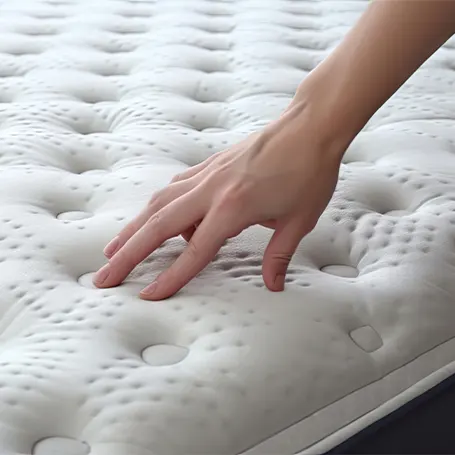
We're going to start with memory foam toppers as they're arguably the most popular. And for good reason! Just like memory foam mattresses, foam toppers offer that hugging sensation everyone loves. Plus, they're generally quite soft, making them perfect if you've been sleeping on a firm, uncomfortable mattress.
Memory foam also offers good pressure relief, since the foam “hugs” your joints and disperses some of the pressure. And, in a similar vein, foam typically won't have motion transfer issues. So, an excellent choice if you share the bed.
With all of that being said, memory foam toppers aren't perfect. Low-to-middle-range foam toppers tend to trap heat, which leads to overheating. And foam isn't exactly durable, so cleaning your topper is a bit more difficult. Lastly, memory foam can produce slight off-gassing and will need a day or two to fully expand. So, you typically won't be able to use it right away.
Advantages Of Memory Foam
- Soft and comfortable
- Good pressure relief
- Plenty of options
- Typically not too expensive
- Good motion isolation
Disadvantages Of Memory Foam
- Can trap heat
- Slight off-gassing when first opened
- Can be too soft for some sleeping positions
- Takes a day or two to expand
- Can be difficult to clean
Polyester blend mattress toppers
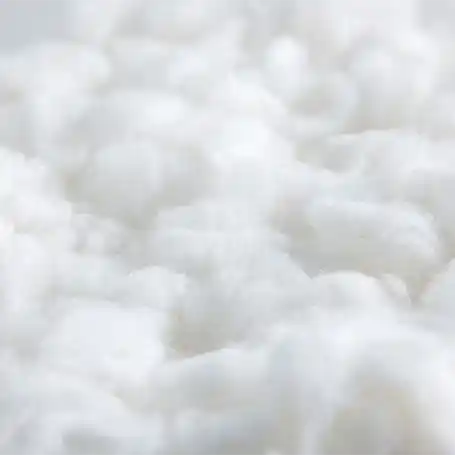
When it comes to polyester blend mattress toppers, variety is the name of the game. Synthetic materials are generally very cheap and thus you can find synthetic toppers in all shapes and sizes and at all price points.
This means that if you're looking for a budget-friendly topper, you're likely going to find it in the synthetic section.
Polyester blend mattress toppers are also usually a lot easier to clean than foam or latex toppers. And if you're looking for a firm mattress topper, a good microfibre filling could be your best bet.
However, do also note that synthetic materials aren't known for their durability and you can run into some overheating issues as well.
Advantages Of Polyester Blends
- Inexpensive
- No odour
- Come in many different firmness levels
- Plenty of options
- Typically very easy to clean
Disadvantages Of Polyester Blends
- Not a lot of support or cushioning
- Can trap heat
- Can become lumpy over time
- Tends to compress over time
- Usually not the highest-quality
Latex mattress toppers
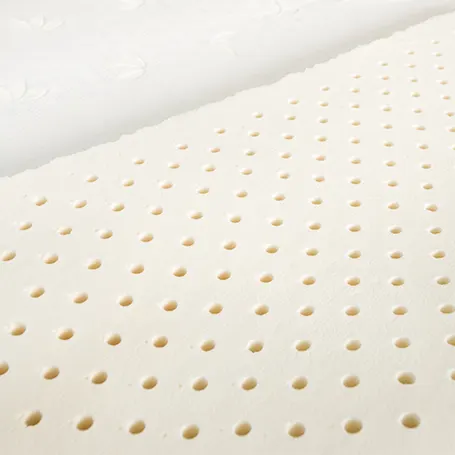
While latex toppers aren't nearly as popular as memory foam or synthetic models, they offer some very impressive features. For one, natural latex is antimicrobial and hypoallergenic, making it an excellent choice for allergy sufferers. Secondly, latex offers that same hugging sensation memory foam is known for while also being a bit more firm.
And this firmness also translates to slightly better overall support. So, if your current mattress has gone a bit soft or lumpy, a latex topper can help out quite a bit. And just like memory foam, you can expect quite a bit of pressure relief and amazing motion isolation!
With all of that being said, natural latex is both hard to find and expensive. So, it's definitely not the best choice for people who want to keep the cost down.
And some people are allergic to latex, which invalidates it being hypoallergenic.
Advantages Of Latex
- Antimicrobial and hypoallergenic
- Firm and bouncy (usually firmer than memory foam)
- Good support for arthritic or painful joints
- Natural latex is very durable
- Amazing motion isolation
Disadvantages Of Latex
- Natural latex is expensive
- You might notice a rubber smell, at least initially
- Some people find latex to be too firm
- Latex toppers are harder to find
- Some people have latex allergies.
Feather mattress toppers
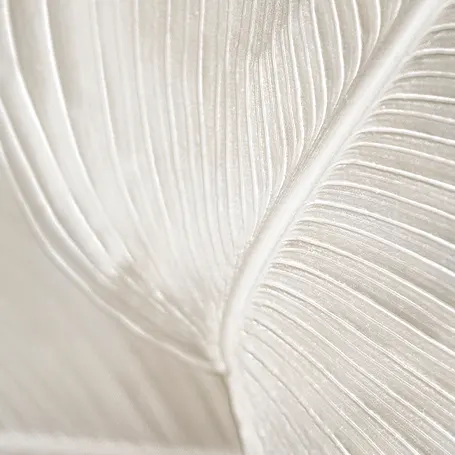
Just like with a feather duvet, a feather topper is going to be incredibly light and soft. This is ideal if you take off your topper during the day or if you have a hard mattress that you'd like to soften up.
On top of that, since feathers and down are a lot less dense than foam or polyester, you typically won't have any issues with overheating. Plus, while definitely not the cheapest, feather toppers usually aren't too expensive either.
However, they do have some downsides as well. For one, you could be in for a rude awakening if the feather shafts poke through the covers and scratch you. Plus, feathers are not nearly as durable as latex for example. In fact, the feathers can get quite lumpy after a few years.
And there are a few more downsides, like the fact that these toppers can be a bit noisy and can be difficult to clean.
Advantages of feather filling
- Very soft
- Less expensive than latex
- Doesn’t retain heat
- Very light
Disadvantages of feather filling
- Feather shafts can poke through the fabric
- Can be noisy and crinkly
- Feathers tend to compress over time, requiring periodic shaking
- Some people are allergic to feathers
- Can be difficult to clean
Wool
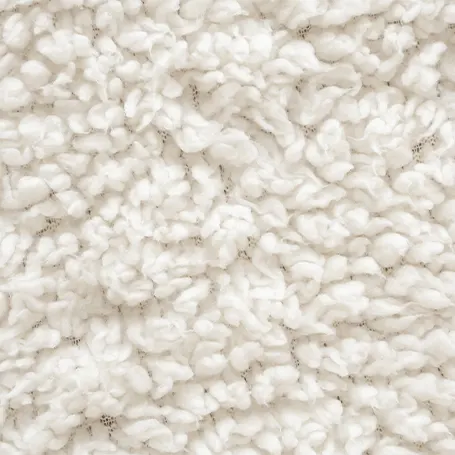
The most impressive part of a wool mattress topper is definitely its temperature regulation. Not to be mistaken with just breathability, wool toppers can both keep you cool in summer and relatively warm during the winter!
And on top of that, the topper itself is usually quite soft and comfortable. This is probably why wool mattress toppers tend to be high-end products that can promise you the moon.
However, do note that high quality also means a higher price tag. And just like with latex, some people might be allergic to wool.
Plus, wool can give off a specific scent at times. So, while it's definitely a solid option, it's not for everyone.
Advantages of wool
- Soft and comfortable
- Cool in summer, warm in winter
- Very durable
- Naturally antimicrobial and hypoallergenic
- Can be of exceptional quality
Disadvantages of wool
- Can be hard to find
- Budget heavy
- Mild “sheep” odour when new
- Some people are allergic to wool
Hybrid mattress toppers
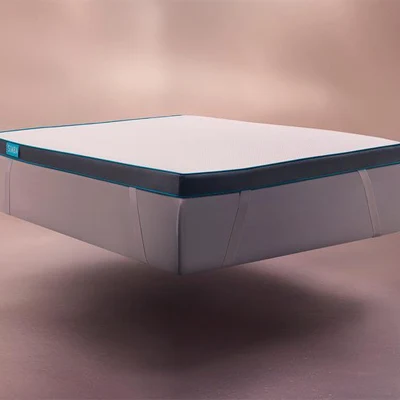
Lastly, let's talk about hybrid mattress toppers. If you ask us, these tend to be the best in terms of quality. This is because hybrid toppers utilise both high-quality memory foam and small pocket springs. This means that you're getting the softness of the memory foam and the support of pocket springs. Hybrid toppers can also usually influence the mattress underneath to a larger degree. So, it can cover up a world of hurt!
Hybrid toppers can also offer rare features such as zoned support. In other words, specialised support for the parts of your body that need it. And they're generally of the highest quality in terms of build. For example, if you watch our video review of the Simba Hybrid Topper, you'll see that it's as premium as they get.
However, do note that hybrid toppers are usually a bit more expensive. And this also means that you likely won't have many models to choose from, as not too many brands tend to go down this road.
Advantages of Hybrid Mattress Toppers
- Tend to be very comfortable
- Usually offer zoned support
- Tend to be of extremely high-quality
- Good durability
- Can influence the mattress more than most toppers
Disadvantages of Hybrid Mattress Toppers
- Tend to be very expensive
- Not many models to choose from
- The foam layer can sometimes trap heat
Can I use my mattress topper straight away?
While you can generally use your mattress topper straight away, it's important to be mindful of potential off-gassing. Off-gassing refers to the release of chemical odours that may occur when a new mattress topper is unwrapped.
To ensure a healthier indoor environment, it's advisable to allow the topper some time to air out before use. This process typically involves leaving the topper in a well-ventilated area for a few hours or days, depending on the material composition and the manufacturer's recommendations. By doing so, you can minimise any potential off-gassing effects and enjoy a more comfortable and breathable sleeping experience.
Conclusion
In conclusion, there's quite a lot of thought that goes into choosing the best mattress topper. From the firmness to the material and the features, it's not really straightforward. However, we hope that after reading our guide on how to choose a mattress topper, you now know how to tackle this issue with ease! But if you do have any more questions, feel free to ask us down in the comments.
Spread the word
FAQs on how to choose the right mattress topper
Here are some of the most frequently asked questions.
The thickness of a mattress topper can vary, typically ranging from 2 to 4 inches. Thicker toppers generally provide more cushioning and support. However, it's essential to strike a balance based on your personal preference and the condition of your current mattress. A thicker topper may work better for older or firmer mattresses, while a thinner one can be sufficient for newer or softer mattresses.
The firmness or softness of a mattress topper depends on your individual preference and the support level you desire. If your mattress is too firm, you may prefer a softer topper to add plushness and comfort. Conversely, if your mattress is too soft, a firmer topper can provide additional support. Consider your sleeping position, body weight, and any specific concerns (e.g., back pain) when determining the ideal firmness level.
Proper maintenance can extend the lifespan of your mattress topper. Most toppers come with removable and washable covers, which should be cleaned regularly according to the manufacturer's instructions. To maintain freshness and cleanliness, you can also vacuum or spot clean the topper itself. Additionally, rotating the topper periodically can help distribute the wear more evenly.

